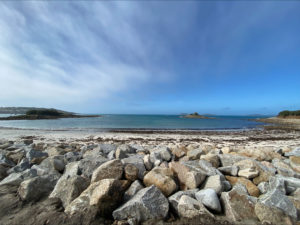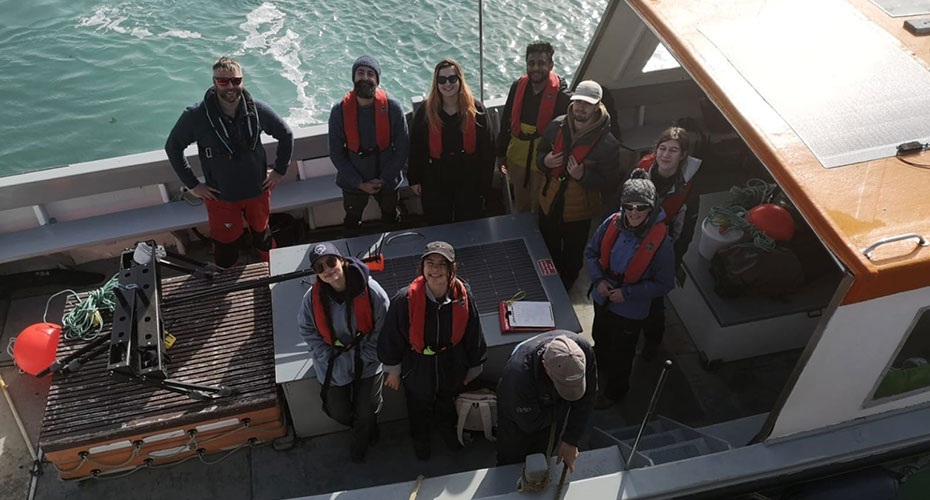Today we have a great article from one of our fantastic MSc Marine Vertebrate Ecology and Conservation students, Ben Haden, looking back at the Isles of Scilly field course earlier this year! Read on to hear how it went:
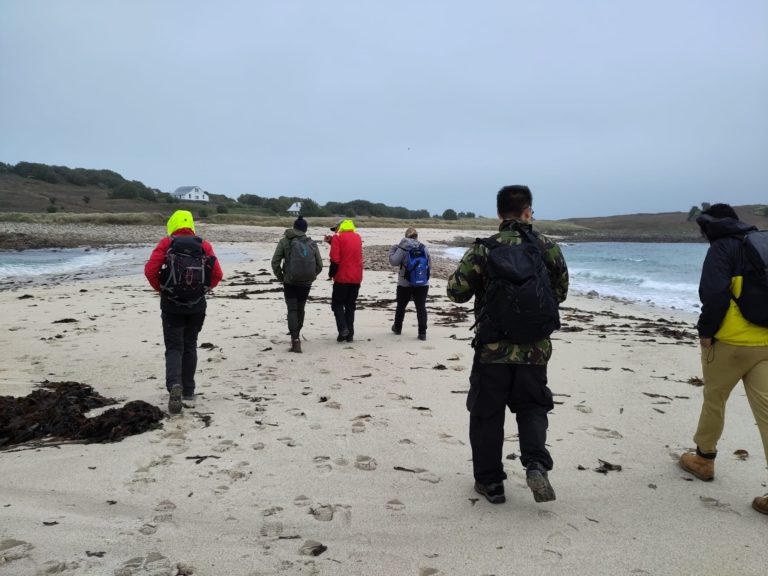
“As fieldwork is coming to an end and it is time for data crunching to begin, I thought it would be a good time to reflect on the amazing Isles of Scilly field course. When looking back on the field course my memories are filled with the laughter and of the knowledge gained on the diverse ecosystem that is the Scillies. As a cohort we agreed that this trip was made even more enjoyable as there were no looming assessments associated with the course, meaning we could immerse ourselves completely in fieldwork without the worry of coursework in the back of our minds. This course provided us with a gentle reminder of the opportunities after university and that all the hard work sitting at a desk is worth it when you can experience and study an environment full of marine vertebrates.
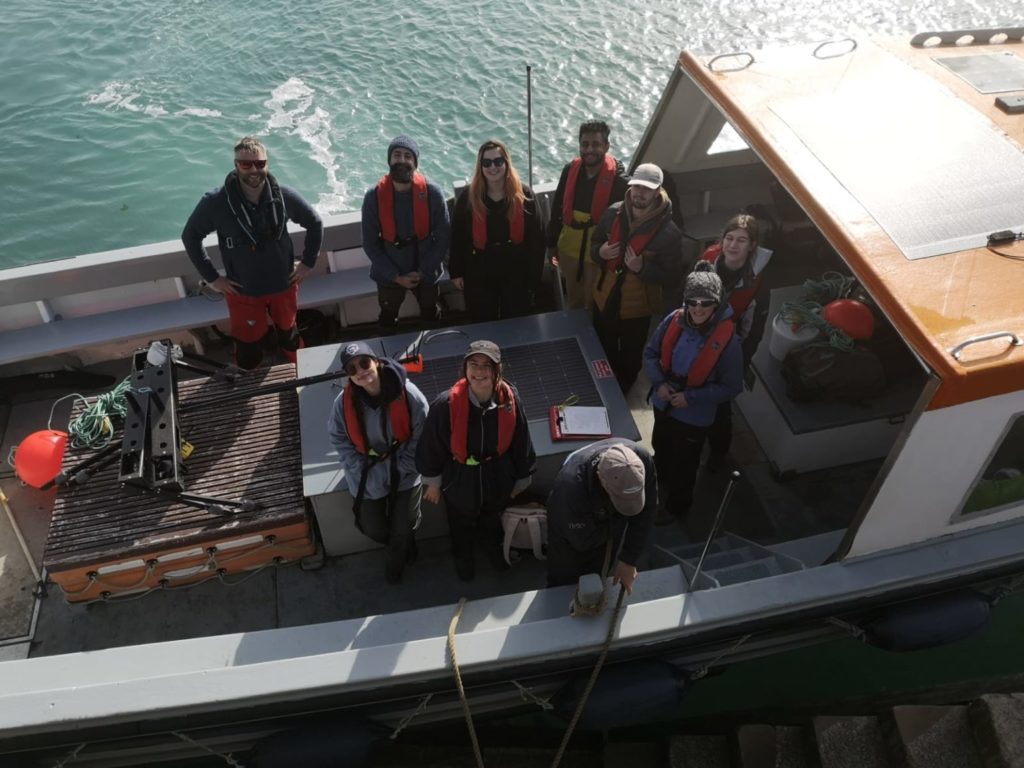
Day 1:
As we got off our bus and onto the Scillonian, the boat which would transport us to and from the Island, we were excited for what the Scillies had in store for us all – be it with a few nerves regarding sea sickness. During our voyage to St Marys, we took part in a distance sampling activity where we used our pre-made distance measurers to estimate the distance the boat was from certain objects in the ocean, i.e. buoys etc. However, the activity was soon overshadowed by the surprise appearance of risso’s dolphins! Using our binoculars, we could clearly depict the rake marks on the dolphins, these are the lighter ‘scratch’ marks on the dolphin’s body which are often caused by other risso’s teeth or from their prey. Upon reaching St Mary’s harbour we were greeted by William Wagstaff, and if there is anything you want to know about the Scillies this is the man you go to. We soon went on a boat trip around the islands and spotted the local wildlife including, puffins, oystercatchers, razorbills, and grey seals. We ended the day with a lovely meal at the Mermaid and prepared for the days ahead.
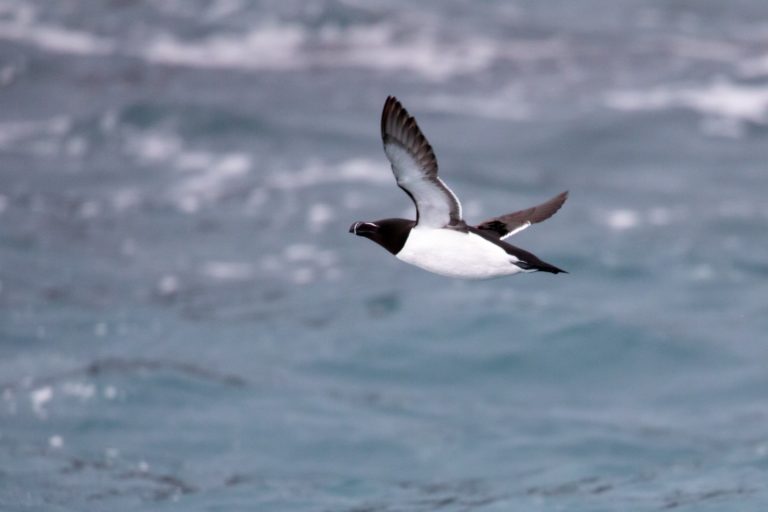
Day 2:
The trip fully kicked off on the first morning as we were met by William again, who gave us an incredibly detailed tour of St Mary’s. William gave us many facts including ‘if you hear a bird call in the Scillies 9 out of 10 times it will be a wren’. On our walk we visited ancient burial chambers or cairns which dated back to the Bronze Age. These ancient tombs reminded us that the Scillies, over thousands of years, split from the mainland. In the evening, Owen Exeter delivered a talk about baited remote underwater videos (BRUVs) and their use in understanding biodiversity and species richness in different marine habitats. A BRUV is an underwater video camera with bait attached in the hope of attracting local marine life and capturing this on video. When compiled with footage from multiple BRUVs, the hope is that an understanding of species richness and diversity can be obtained. This can then be used in policy amendments or when looking to create or further the protection measures in Marine Protected Areas (MPAs). One drawback of using BRUVs for species richness is that largely it is predators who are attracted to the BRUV due to the bait, so there is a potential weighting of results towards predators as a result. This lecture was very engaging, and we took away key details which would prove useful in future trip activities.
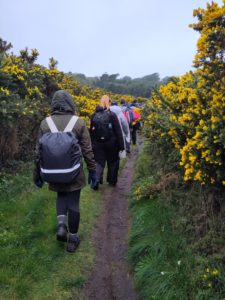
Day 3:
Upon waking the following morning, with the knowledge of St Mary’s rich biodiversity in our heads, we learnt about another one of the islands, St Agnes. Joe Peacock, Vicky Heaney, and Jaclyn Pearson gave us a talk on the St Agnes Seabird Recovery Project, and how the island’s community orchestrated protection measures against invasive species such as rats who predate on the seabird eggs. In the afternoon, we were treated to a wildlife boat trip with a focus to observe the wide array of seabirds the Scillies have to offer. This trip included us having a ‘conversation’ with a manx shearwater as we played recorded calls down a potential burrow and received a reply from the nesting bird inside. We learnt this reply could be a way of warding off other birds looking to nest in this area. This interaction with the manx shearwater was definitely a trip highlight for all of us!
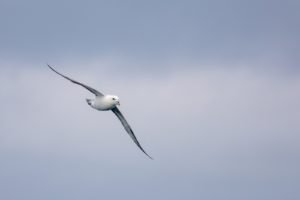

Day 4:
After breakfast, we headed to St Mary’s Harbour, where Owen Exeter provided us with a demonstration of how to construct a BRUV and then described the process of deployment. The talk Owen gave a few nights previous came in handy here, as did an assessment we had completed before the trip which used previously collected BRUV video footage to write a scientific report detailing BRUV deployment and our findings.
We were then split into two groups as we were going to deploy two BRUVs in total for 1 hour each. The first group went out to deploy the first BRUV whilst the second group was able to explore the lovely coffee shops in the town of St Marys and prepare their sea legs. The groups then switched over and the second group deployed their BRUV and collected the first group’s BRUV. There was much excitement around deploying and retrieving BRUVs; each group member had an assigned role and we needed to work as a team to not damage the BRUVs. We used locally sourced oily fish as bait for the BRUVs as this has been shown to aid bait plume dispersal meaning predators further away from the deployment are more likely to be attracted to the BRUV. Upon BRUV collection we waited for a mini cinema experience in our hostel of the BRUV footage. Unfortunately, one group’s BRUV observed very little, but this was soon forgotten after the other BRUV footage picked up a small-spotted catshark! The way the catshark investigated the BRUV was mesmerising, and its presence was the icing on the cake.
We were then treated to a talk by Dr Alice Trevail about her work and seabirds! It is fair to say Alice has done some incredible work in some amazing locations but her stories of floating bedrooms to avoid coconut crabs stealing her stuff have stuck with me and are something I’ll remember if I am lucky enough to work in environments that coconut crabs call home!
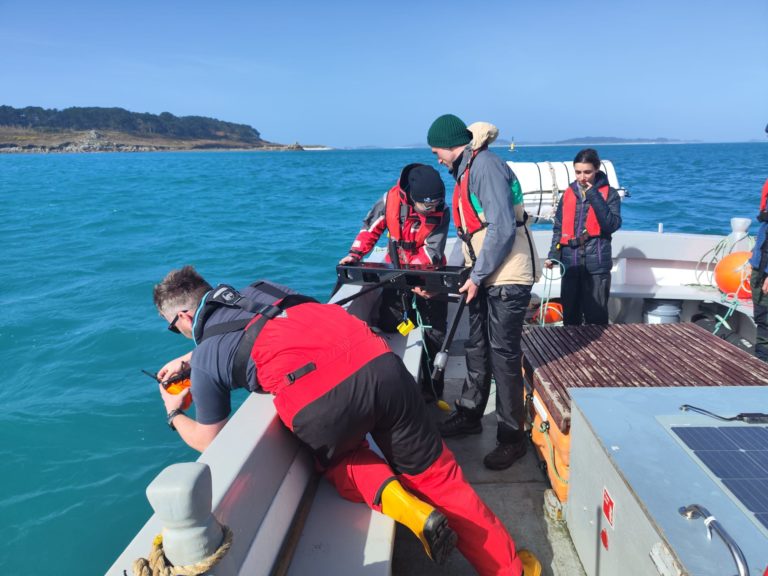
Day 5:
Dr Sarah Nelms set us an activity to complete a plastic census of the beaches on St Marys. We were split into groups and sent to different beaches to perform our survey. To complete the task, we measured 100m and walked side-by-side along a randomly placed line transect, stopping once we spotted plastic. Once the plastic was collected, we noted down the type and potential source of plastic on pre-made sheets and then placed the plastic in our rubbish bags. The importance of this exercise was overshadowed by Tom, Elin, and I chasing our now-snapped transect across the beach due to the wind. A sight which was probably hilarious for all those not involved. Despite the loss of our transect, we managed to complete the task and disposed of the plastic correctly. Following the survey, we bunkered down in the hostel for the afternoon to analyse the plastic data collected by each group. Each group presented their findings, and it’s fair to say that the wind may have sent my group a bit crazy, as we decided to detail our findings using poetry which is not your typical science communication method! After our final meal in the Isles, Dr Kristian Metcalfe delivered an Isles of Scilly pub quiz. Excitement erupted at the chance to be victorious after certain members of the group declared they would win, a statement which was later proved to be untrue. Mixed in with the quiz were some obscure questions, so for next year’s cohort here’s a hint, Owen used to be a lettuce farmer!
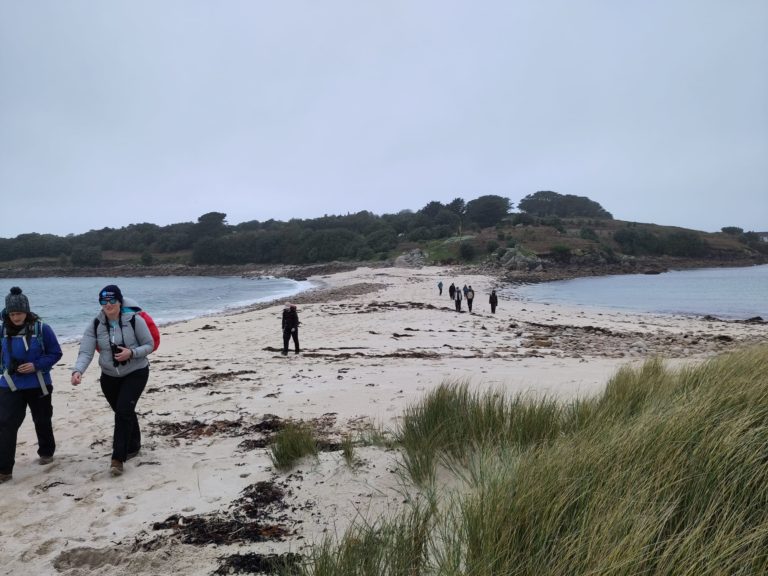
Day 6:
Home time! Before our sleepy ferry journey back to Cornwall, we were able to have one final exploration of St Marys and a group of us visited Star Castle which originates from 1593! Once lunch was eaten and souvenirs were bought, we boarded the Scillonian. As St Marys disappeared past the horizon, I had a moment to reflect on all I had learnt in a short space of time. I believe because of the trip I have become an improved field biologist with a newfound love of seabirds, a category of marine vertebrate that perhaps wrongly I had little time for prior to this field course. I was now able to identify multiple different seabird species, including to be to tell the difference between a cormorant and a shag which I’m sure we can all agree is not easy. The Isles of Scilly will always be a special place for me and one I hope to visit again in the not-too-distant future! On behalf of the whole of the MVEC course I would like to thank Kristian Metcalfe, Sarah Nelms, Alice Trevail, and Owen Exeter for accompanying us on such an amazing trip and helping it be such a memorable one. To Victoria Hobson, thank you for helping to organise this trip you were greatly missed, and thank you to William, John, Vickie, and Jaclyn for sharing your knowledge of the islands with us. And finally, from myself, thank you to all of my MVEC course mates, I have never experienced a group of people so willing to help each other understand topics and give their time to make sure each individual is comfortable with what we are learning, you really are all amazing!”
– Ben Haden
